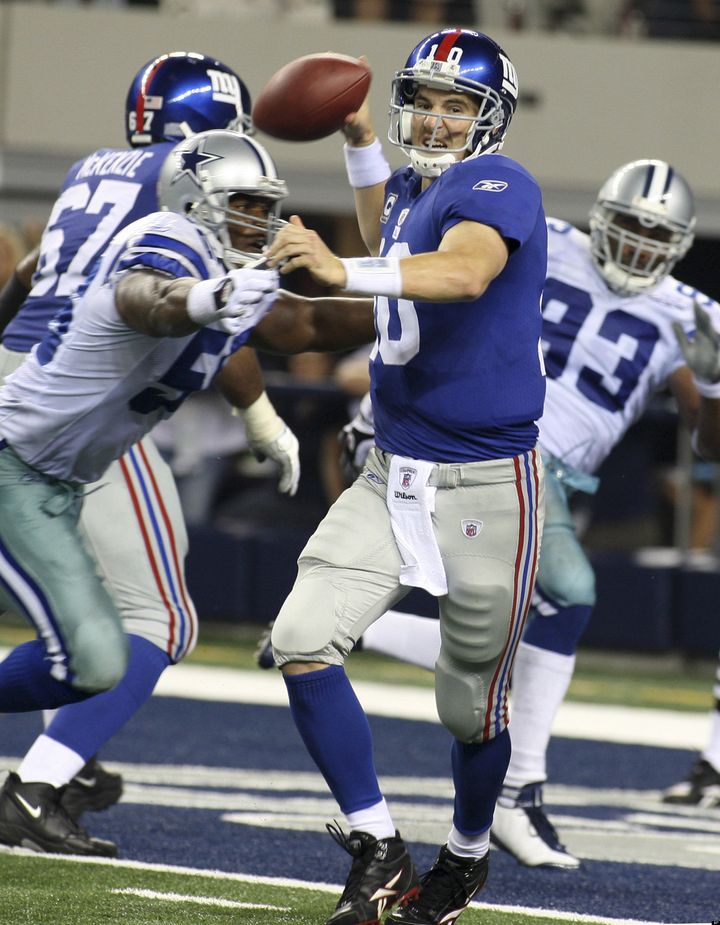
Eli Manning's "day-to-day" status last week with a right heel injury reminds us of a common problem that affects athletes - plantar fasciitis. Plantar fasciitis is an inflammation of the thick, supportive tissues on the bottom of the foot, and is one of the most common causes of heel pain. As many as 2 million Americans are affected by plantar fasciitis each year, making it a problem that affects both competitive and recreational athletes alike. While the precise cause remains unknown, it is thought to result from repetitive microtrauma and inadequate stretching of the plantar fascia, a thick supportive band of connective tissues running between the heel bone and the toes. Plantar fasciitis can affect athletes of virtually every sport, but is particularly common among runners. Overweight people are at a greater risk as well.
Athletes with plantar fasciitis will complain of heel pain that is often worst in the first few steps in the morning, and gradually improves with walking throughout the day. There is also often discomfort along the inner aspect of the foot with flexing the toes upward towards the shin bone ("tibia"). The region at the inner aspect of the heelbone where the plantar fascia attaches is often tender to palpation as well. Plain x-rays may sometimes show a spur in the bone at this location, although they are often normal. MRI or ultrasound of the plantar fascia is usually much more effective in confirming the diagnosis.
If you have these symptoms, it is important to seek the care of your sports medicine or foot and ankle specialist. The first line of treatment is non-surgical and is usually very effective. Treatments include stretches for the plantar fascia and Achilles tendon, as well as splints for use at night time to keep the foot in a neutral position. Special taping of the foot can help to provide support and relief with walking as well. Non-steroidal medications are also effective in helping to relieve severe bouts of inflammation. Corticosteroid injections can also be used but must be done so judiciously, as their overuse can increase the risk of rupture of the plantar fascia and loss of its support in maintaining the arches of the foot. Surgery procedures such as a cut or removal of the plantar fascia are reserved for only those cases which fail to respond to all other interventions. Prescription foot orthotics continue to be an important part of the successful treatment of plantar fascia and heel injuries. The orthotic redistributes the force and weight away from the painful heel to accelerate healing and ultimately prevent further problems. The ultimate goal is to prevent the inflamed plantar fascia from weakening and developing a small tear.
Eli was back on the field soon as he was under the care of great doctors. However, it is important to remember that if you develop heel pain to do the same - seek the care of your trusted medical professionals to treat plantar fasciitis early and quickly. Self diagnosis and treatment is never a good prescription.